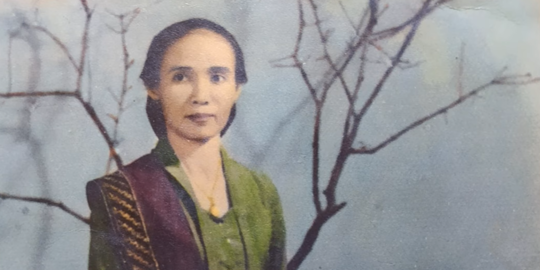
The figure of Olly Sastra cannot be separated from the struggle of resistance against the Japanese invaders in the city of Cirebon, West Java. The woman whose real name is Olly Siti Soekini balked at the arrival of the Japanese soldiers in her homeland.
She actively tried to maintain the integrity of her country, especially after President Soekarno read the text of the proclamation. As a figure driving independence in Cirebon, Olly spreaded the heroic spirit. One of them was when he raised the red and white flag at the Djawa Hokokai Building, Pekalipan Cirebon, which at that time was the headquarters of the Japanese army.
Not only that, Olly was also actively involved in a number of organizations such as Partindo and PNI. Later, he also actively voiced people's aspirations while serving as chairman of the Cirebon Youth Force.
No doubt, his important services for the Republic of Indonesia made him closer to President Soekarno, so that he was given a special gift by the president.
As already mentioned, Olly was keen to affirm the independence that had just been proclaimed. He was often reckless, and one thing that was phenomenal was when he dared to raise the red and white flag at the Djawa Hokokai Building, which at that time was the headquarters of the Japanese army.
As mentioned by Olly Sastra's youngest daughter, Esti Handayani, it was said that her mother dared to raise the red and white flag and ended up receiving harsh treatment for it.
"At that time my mother did put the flag there, and of course it made the Japanese soldiers angry. My mother said that Indonesia was not yet independent, she said. Then he was grabbed and kicked by the Japanese soldiers but managed to break free and the flag could be taken back,” said Esti.
The red and white flag was previously sewn by Olly herself and made of satin, after he received news that President Soekarno read the text of the proclamation of independence in Jakarta.
After the Japanese left, Olly raised the shabby flag in the building and made it the location of an empowerment home for children and women victims of war.
There she fought for children and women who could not afford access to education, and were illiterate. Apart from being used as an educational location, Olly wanted the former Djawa Hokokai Building to be used as a fighting building because it is often used as a gathering place for Cirebon fighters.
“The building, which was then located at Jalan Pekalipan number 106, Cirebon City was used as a museum of struggle by the fighters. But after that, my mother established a school specifically for war victims," explained Esti.
** Your post has been upvoted (1.40 %) **
Curation Trail is Open!
Join Trail Here
Delegate more BP for bigger Upvote + Daily BLURT 😉
Delegate BP Here
Upvote
https://blurtblock.herokuapp.com/blurt/upvote
Thank you 🙂 @tomoyan